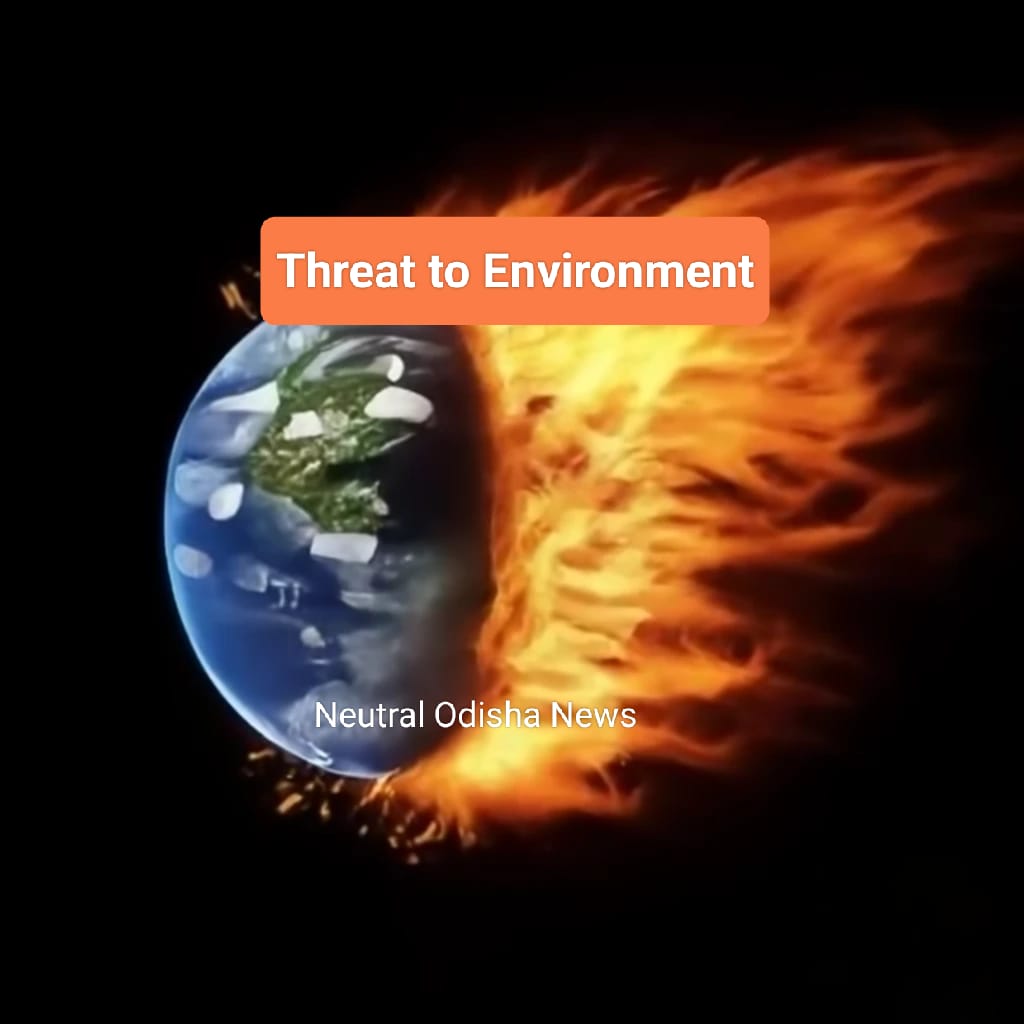Making Peace with Nature – Report by UNEP – Click Here
The environment is an intricate web of ecosystems that sustains life on Earth. However, various threats jeopardize these delicate systems, leading to significant ecological, social, and economic consequences. Understanding these threats and developing effective mitigation strategies is crucial for preserving our planet for future generations. This article explores the primary environmental threats and outlines actionable steps to mitigate them.
1. Climate Change
Threat:
Climate change, primarily driven by human activities such as burning fossil fuels and deforestation, results in rising global temperatures, altered precipitation patterns, and more frequent extreme weather events.
Mitigation Strategies:
- Reduce Greenhouse Gas Emissions: Transition to renewable energy sources (solar, wind, hydro), improve energy efficiency, and promote public transport and electric vehicles.
- Enhance Carbon Sequestration: Support reforestation, afforestation, and sustainable land management practices to capture carbon dioxide.
- Adopt Climate-Resilient Practices: Implement climate adaptation strategies in agriculture, water management, and urban planning.
2. Deforestation
Threat:
Deforestation results from logging, agriculture, and urban expansion, leading to loss of biodiversity, disruption of ecosystems, and increased greenhouse gas emissions.
Mitigation Strategies:
- Promote Sustainable Forestry: Implement responsible logging practices and certification schemes (e.g., FSC certification) to ensure forest sustainability.
- Support Reforestation Projects: Engage in tree planting initiatives and support policies that protect existing forests.
- Encourage Agroforestry: Integrate trees into agricultural practices to enhance biodiversity and soil health.
3. Pollution
Threat:
Pollution, including air, water, and soil pollution, is caused by industrial activities, waste disposal, and agricultural practices, leading to health risks and ecosystem degradation.
Mitigation Strategies:
- Enforce Regulations: Implement stricter regulations on emissions and waste disposal for industries and promote the use of cleaner technologies.
- Promote Waste Reduction: Encourage recycling, composting, and the reduction of single-use plastics to minimize waste generation.
- Clean Up Polluted Areas: Engage in cleanup initiatives for polluted sites and support legislation for environmental remediation.

4. Loss of Biodiversity
Threat:
Habitat destruction, pollution, climate change, and invasive species contribute to the alarming rate of biodiversity loss, jeopardizing ecosystem stability and resilience.
Mitigation Strategies:
- Establish Protected Areas: Designate national parks, wildlife reserves, and marine protected areas to safeguard critical habitats.
- Restore Degraded Ecosystems: Engage in habitat restoration projects, such as wetland restoration and rewilding initiatives.
- Control Invasive Species: Monitor and manage invasive species to protect native ecosystems and biodiversity.
5. Overpopulation
Threat:
Overpopulation strains resources, leading to habitat destruction, pollution, and increased carbon emissions as the demand for food, water, and energy escalates.
Mitigation Strategies:
- Promote Family Planning: Support reproductive health services and education to empower individuals to make informed choices about family size.
- Enhance Education: Increase access to education, particularly for women and girls, to foster social and economic development.
- Encourage Sustainable Development: Promote urban planning that focuses on sustainable resource management and reducing environmental footprints.
6. Ocean Acidification
Threat:
The absorption of excess carbon dioxide by the oceans results in ocean acidification, which negatively affects marine life, particularly organisms with calcium carbonate shells or skeletons.
Mitigation Strategies:
- Reduce CO2 Emissions: Implement strategies to decrease carbon emissions globally, focusing on energy transition and reducing fossil fuel dependency.
- Support Marine Conservation: Engage in efforts to protect marine ecosystems through sustainable fishing practices and marine protected areas.
7. Waste Generation
Threat:
The increasing amount of waste, particularly plastic waste, contributes to environmental pollution, landfill overflow, and habitat destruction.
Mitigation Strategies:
- Implement Zero Waste Policies: Promote policies that encourage waste reduction, recycling, and composting in communities.
- Support Circular Economy Initiatives: Encourage businesses to adopt circular economy practices that prioritize sustainable production and consumption.
8. Unsustainable Agriculture
Threat:
Conventional agricultural practices, including monocropping, excessive pesticide use, and over-fertilization, contribute to soil degradation, water pollution, and loss of biodiversity.
Mitigation Strategies:
- Promote Organic Farming: Encourage organic farming practices that reduce chemical inputs and enhance soil health.
- Adopt Agroecological Practices: Implement sustainable farming techniques such as crop rotation, polyculture, and permaculture to enhance biodiversity and soil health.
- Reduce Food Waste: Promote awareness of food waste and encourage efficient food production and consumption practices.
9. Water Scarcity
Threat:
Water scarcity arises from over-extraction of water resources, pollution, and climate change, leading to detrimental effects on human health, agriculture, and ecosystems.
Mitigation Strategies:
- Implement Water Conservation Practices: Promote water-saving technologies (e.g., drip irrigation) and practices in agriculture and households.
- Protect Water Sources: Establish protected areas for watersheds and wetlands to preserve clean water sources.
- Enhance Water Management Policies: Support integrated water resource management that considers the needs of ecosystems and communities.
10. Land Degradation
Threat:
Land degradation, caused by deforestation, unsustainable agricultural practices, and urbanization, results in soil erosion, loss of fertility, and reduced agricultural productivity.
Mitigation Strategies:
- Practice Sustainable Land Management: Promote practices that enhance soil health, such as crop rotation, cover cropping, and reduced tillage.
- Rehabilitate Degraded Lands: Engage in restoration projects that aim to rehabilitate degraded lands and improve soil quality.
The threats to the environment are interconnected and require a comprehensive approach to mitigate their impacts effectively. By understanding these threats and implementing the strategies outlined above, individuals, communities, and governments can work together to protect our planet. Every action counts, whether it’s reducing waste, supporting conservation efforts, or advocating for sustainable policies. By taking responsibility for our environment today, we can ensure a healthier, more sustainable world for generations to come.




